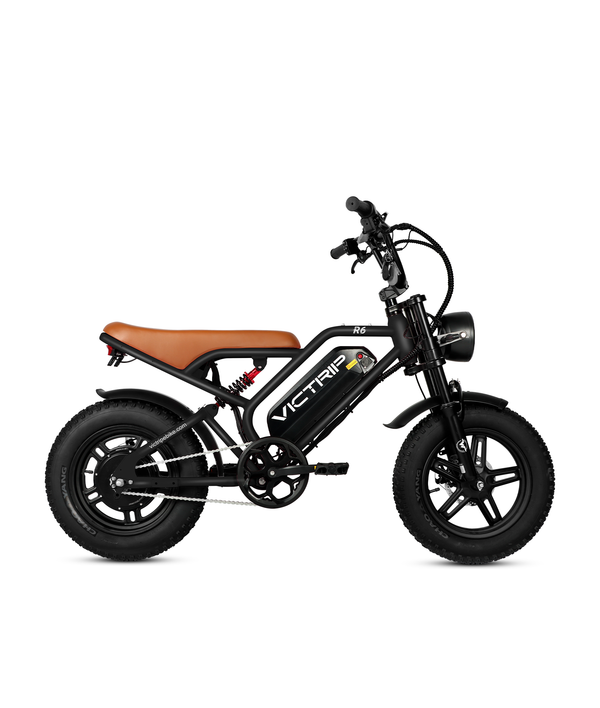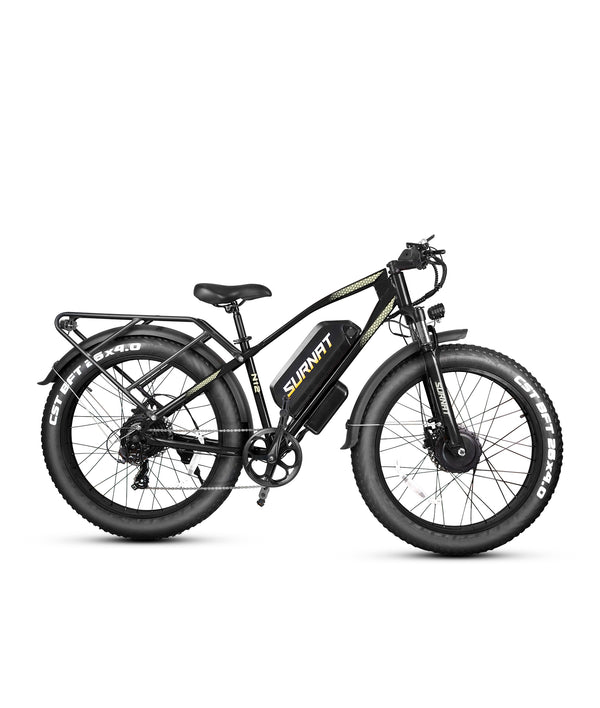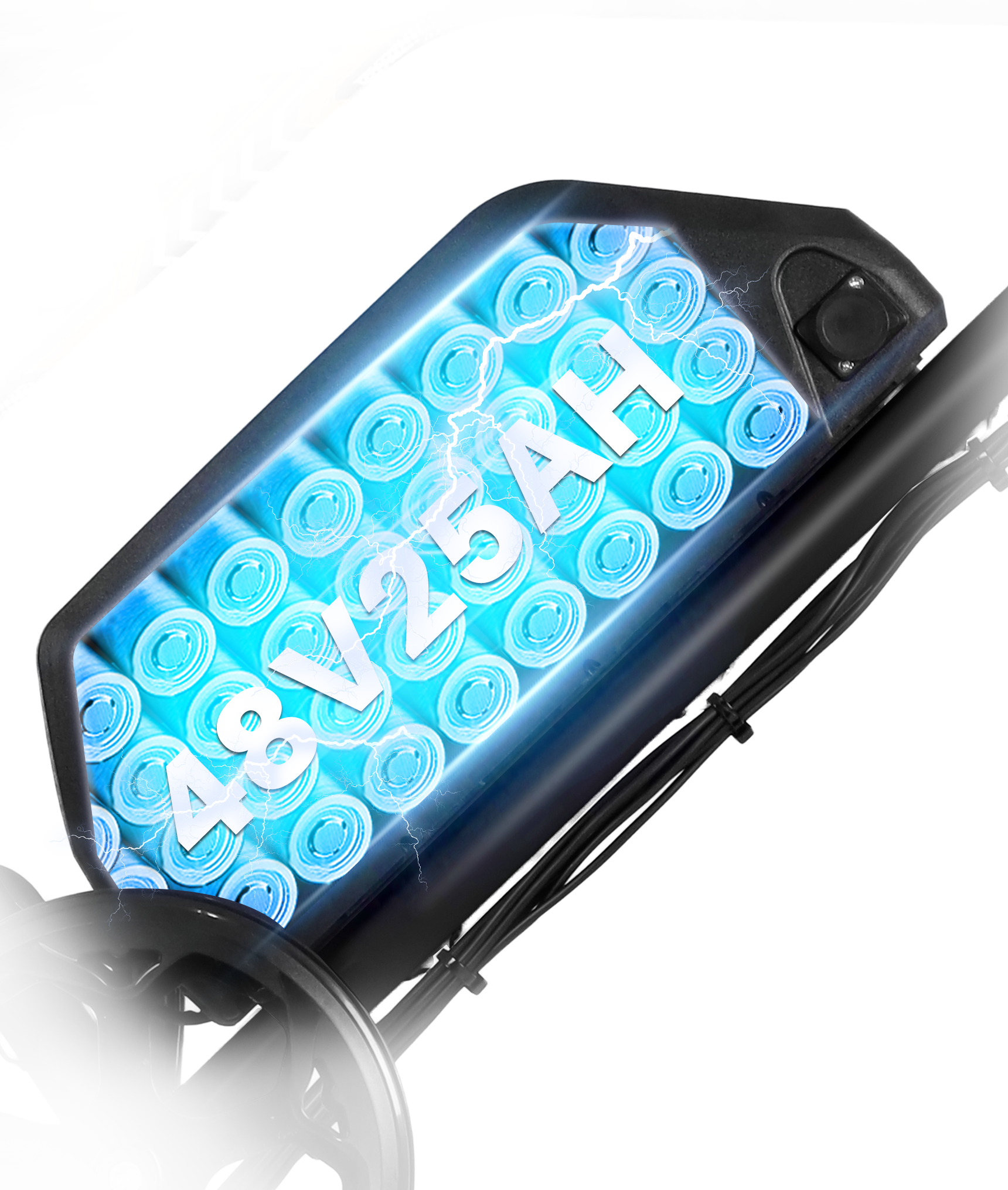Electric bikes are awesome because they let more people ride farther, climb hills, and carry loads without breaking a sweat. But when you shop or plan a ride you’ll face a persistent question: should you prioritize range or power? That’s the essence of the Ebike Range vs Power debate, and this guide walks you through the real-world trade-offs, the technical basics, and practical recommendations so you can decide quickly and confidently.
Why the Debate Matters: Range, Power and Real-World Riding
When people argue about range versus power they're usually talking about different priorities. A commuter who needs a consistent 40 miles round-trip cares most about reliable range. A rider hauling groceries or climbing long hills cares more about power and torque. Both are right — but they need different bikes and setups.
This article is meant to be practical. I'll explain the terminology, point out the seven most important factors that determine both range and power, and show you how to weigh them depending on your use case. You’ll get clear, actionable advice — nothing vague — so you can choose or tune an ebike to fit your daily life.

Core Definitions: What We Mean by Range and Power
Before diving in, let's define terms in plain language.
-
Range: How far an ebike can go on a single battery charge under a given set of conditions. Real-world range varies widely with speed, rider weight, terrain, and settings.
-
Battery capacity (Wh): Watt-hours (Wh) measure stored energy. Higher Wh usually equals longer range. VICTRIP Ebikes often feature high-capacity LG or Samsung batteries, which help extend commuting distance reliably.
-
Motor power (W): Manufacturer-stated continuous or peak wattage (e.g., 250W, 750W). Power affects acceleration and top speed but is not the same as range.
-
Torque (Nm): Rotational force that determines hill-climbing ability and low-speed pulling power.
-
Pedal-assist levels and controller: The user-selectable assistance modes controlled by the motor controller that determine how much motor help you get.
-
BMS (Battery Management System): Protects cells and manages charge/discharge rates; it strongly affects longevity and safety.
Understanding these basics will help you make sense of the trade-offs that follow.
The 7 Critical Factors That Decide Range and Power
Here are the seven biggest, practical influencers on both how powerful your ride feels and how far you'll get.
1) Battery Capacity (Wh) — the range engine
Battery capacity in watt-hours (Wh) is the single best predictor of range. Simple rule: more Wh → more possible miles. But it's not linear: doubling Wh doesn't always double real-world range due to inefficiencies and nonlinear energy losses. Still, if you need a long commute without recharging, prioritize Wh. For example, many VICTRIP Ebikes come with high-capacity LG batteries, giving riders peace of mind for longer rides.
How to think about it: estimate your average energy consumption (Wh per mile). A typical commuter might use 15–30 Wh/mile depending on assistance and terrain. So a 500 Wh pack at 20 Wh/mile gives ~25 miles. But remember: speed, assist mode, and hills change this number.
2) Motor Power and Torque — how speed and hill-climbing change things
Motor power (watts) and torque (newton-meters) control acceleration and climbing. A 750W motor or a high-torque mid-drive will let you climb steep hills and carry heavier loads without overheating. But more power usually means heavier motors, higher drag at speed, and — when used aggressively — higher energy consumption that reduces range. The VICTRIP R6 offers a 750W motor with 85 Nm torque, perfect for riders who need strong performance without sacrificing range.
In short: power improves performance; excess power used constantly reduces range. Use power when you need it, and you’ll keep range reasonable.
TOP PICK

VICTRIP®R6 Moped Ebike for Teens
3) Rider Weight, Cargo, and Load Distribution
Every extra kilo increases energy consumption. A heavier rider or lots of cargo increases rolling and climbing energy. For cargo e-bikes, expect range drops compared to single-rider estimates. Proper load distribution also affects efficiency and handling — keep heavier items low and centered.
4) Terrain, Gradient, and Speed Profile
Flat, steady riding is the most efficient. Hills, frequent stops, and high cruising speeds dramatically cut range. If you ride hilly routes, choose higher torque and bigger battery. If you ride flat urban routes, a modest motor and large-ish battery give excellent economy.
5) Pedal Assist Level and Throttle Use
Using a high-assist level or throttle-only riding draws more power. Pedal with the assist engaged is usually far more efficient than relying solely on the throttle. Smart use of assist (lower in flats, higher on climbs) preserves range while delivering power when needed.
Read More: Pedal Assist Electric Bike vs Throttle: Which Is Right for You?
6) Efficiency: Tires, Aerodynamics, and Rolling Resistance
Small choices matter. Fat knobby tires increase comfort but also rolling resistance; smooth, well-inflated tires reduce drag. Rider posture and accessories (panniers, racks, baskets) affect aerodynamics. Maintain tires and drivetrain for best efficiency.
7) Temperature, Battery Health, and BMS
Battery chemistry reacts to temperature. Cold reduces usable capacity; heat accelerates aging. The BMS protects cells but may limit performance to prevent damage. Keep batteries at moderate temperatures, and plan for capacity loss over years. VICTRIP Ebikes feature intelligent BMS systems that protect cells and optimize performance across seasons.
Measuring Range: Real Tests, Estimates, and Pitfalls
Real-world range testing is the only way to know what to expect; manufacturer numbers are often optimistic. Here's a practical testing method:
-
Baseline test: Fully charge, ride a known route at your normal pace and assist setting, and record distance when battery hits the manufacturer's low threshold. Repeat three times and average.
-
Segmented tests: Do flat-only and hill-only rides to identify how terrain shifts consumption.
-
Payload test: Repeat with your usual cargo to see real-life numbers.
-
Seasonal checks: Test in summer and winter to estimate temperature effects.
Pitfalls to avoid: using maximum assist or throttle for the whole test; not accounting for wind; misreading state-of-charge indicators (not all displays are precise). Keep a small log for a few weeks and you’ll quickly get reliable, personal range estimates.
Power vs Range Trade-offs by Use Case
Different riders should prioritize differently. Here are practical recommendations.
🚉 For Daily Commuters – Steady Urban Miles
If your routine involves predictable city rides and you value reliability over raw speed, focus on efficiency and practical range. A bike with 400–700 Wh and a 250–500W motor is typically more than enough.
Many urban riders appreciate the VICTRIP® SURNAT S10&S10-1, which is tuned for smooth, economical rides without draining the battery unnecessarily.
🏔️ For Hilly or Challenging Terrain
Frequent climbs demand high torque rather than high top speed. A strong mid-drive or torque-rich motor, paired with a larger battery, ensures you won’t struggle on steep routes.
In these conditions, riders often turn to the VICTRIP® N12, valued for its climbing power and low-gear support on demanding gradients.
TOP PICK

VICTRIP®SURNAT N12 2000W Electric Bike
🛒 For Carrying Cargo or Heavy Loads
Hauling gear, groceries, or even a child seat? You’ll need a strong frame, high torque output, and a battery that can handle constant strain.
The VICTRIP® R6 Pro stands out here—it’s built to stay stable under load, making it a popular choice for utility and family use.

🌍 For Touring & Long-Distance Exploration
On long journeys, it’s all about endurance. Look for high-capacity or dual-battery systems, efficient motor tuning, and the option to carry spares or charging solutions.
Long-range riders often favor the VICTRIP® Titan S, designed for extended travel with the flexibility to handle evolving terrain and distance.
🏁 For Sport Performance Riders
If thrill and acceleration are your goals, be prepared to trade some range for power. Look for responsive motors that deliver quick bursts rather than long hauls.
Performance-focused riders typically choose models optimized for speed and punch, prioritizing excitement over endurance.
Practical Tips to Maximize Range Without Sacrificing Safety
You don’t have to choose between suffocating range numbers and usable power. Here’s how to get both:
-
Ride with intention: Use lower assist on flats and increase only on hills.
-
Maintain tires: Keep them inflated to spec for lower rolling resistance.
-
Reduce weight: Carry only what you need; choose lightweight accessories.
-
Keep cadence steady: Smooth pedaling is more efficient than frequent surges.
-
Use the right gearing: Proper gearing reduces motor strain on climbs.
-
Charge smartly: Avoid deep discharges regularly; shallow cycles are kinder to battery life.
-
Plan routes: Favor routes with fewer steep climbs when trying to conserve battery.
These small behaviors compound into substantial range gains.
Choosing the Right Ebike — Questions to Ask Before Buying
Before you buy, answer these quick questions:
-
How many miles/day will I ride? (round-trip)
-
How hilly is my route?
-
Do I carry cargo or a passenger?
-
Is speed or legal compliance (e.g., 250W/25kmh limits in some regions) a concern?
-
Do I want a throttle or only pedal assist?
-
Will I have access to charging at work or en route?
Match the answers to specs: battery Wh for distance, motor power/torque for hills and load, and a robust BMS for long-term reliability.
Quick Comparison Table: Typical Specs and Expected Range
| Use Case | Typical Motor | Typical Battery (Wh) | Rough Real Range (miles) |
|---|---|---|---|
| Urban commuter (flat) | 250–500W hub | 400–600 Wh | 20–40 mi |
| Hilly commuter | 500–750W mid-drive | 600–900 Wh | 15–35 mi |
| Cargo/utility | 750–1000W hub/mid | 700–1000 Wh | 12–30 mi (varies with load) |
| Touring/long-range | 500–1000W mid-drive | 900–1500 Wh (dual) | 40–100+ mi (with careful pacing) |
Note: These are realistic ranges for mixed real-world riding. Your numbers will vary based on speed, load, and assist settings.
Common Myths and Misunderstandings
-
Myth: Higher wattage always means more range.
Reality: Higher wattage gives more power but, if used constantly, drains battery faster. Range depends largely on Wh and how you use power. -
Myth: Bigger battery is always better.
Reality: Bigger batteries add weight and cost. Match pack size to realistic needs and consider swappable batteries for long tours. -
Myth: Regenerative braking replaces battery capacity.
Reality: Regen helps on long descents and in start-stop traffic but recovers only a small fraction of energy compared to consumption. -
Myth: All batteries perform the same in cold.
Reality: Lithium chemistry suffers in cold; expect reduced usable capacity and slower charging in low temps.
Conclusion: Prioritizing What Matters Most for You
When weighing Ebike Range vs Power, there’s no single universal winner — the right choice depends on your real-world needs. If your daily goals are distance and predictable commutes, prioritize battery capacity and efficiency. If you need to climb hills, carry cargo, or get off the line quickly, prioritize torque and motor capability — but plan for a larger battery or accept shorter range.
Practical approach: list your typical route (distance, terrain, cargo) and then match the seven factors discussed earlier. Test rides and real-world range checks will confirm the choice. If you're still unsure, lean slightly toward extra battery capacity — a bit more Wh gives flexibility without permanently sacrificing the ability to climb when you need to.
Ride smart, maintain your bike, and use assist judiciously — you'll get the best of both worlds.
FAQs
How far will my ebike go on a single charge?
It depends — but expect 15–40 miles on average for most commuter setups. Heavier loads, steep hills, and high speeds reduce range. Test with your usual route and assist level for accurate numbers.
Does a more powerful motor reduce range?
Not by itself. A more powerful motor allows you to climb and accelerate better; range drops only if you use that power more often. Controlled use keeps range reasonable.
Is it better to get a mid-drive or hub motor for range?
Mid-drives are often more efficient on hilly rides because they use bike gearing, but they add complexity and maintenance. Hub motors can be efficient for flat, steady riding.
Can I extend range by pedaling more?
Yes — pedaling reduces reliance on the motor and conserves battery. Use assist settings that complement your pedaling effort.
How much does temperature affect battery performance?
Cold can reduce capacity by 10–30% or more depending on severity. Heat accelerates long-term degradation. Store and charge batteries in moderate temperatures when possible.




Share:
Best Time to Buy a Electric Tricycle: When to Get the Best Deals
How to Choose the Best Electric Bike for Adults